Are you looking for a contractor?
Submit our quick form and get quotes now!
Table of Contents
8 min read
Everything to Know About Window Insulation
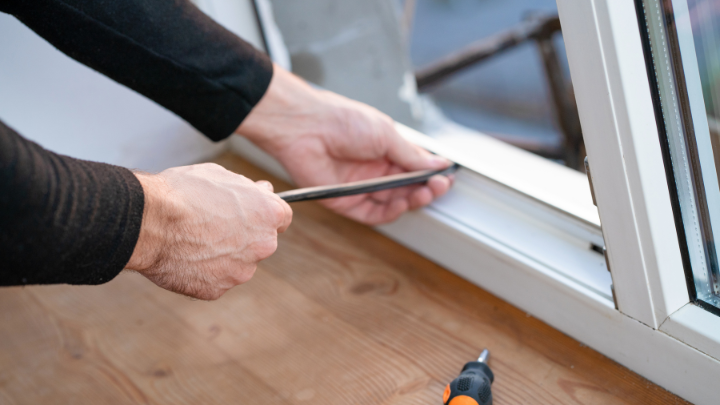

8 min read
Everything to Know About Window Insulation
InsulationEverything to Know About Window Insulation
Window insulation is a simple and affordable project, one that can do a lot in terms of your thermal comfort and energy bills. However, a lot of homeowners neglect this step, which can lead to a devastating ripple effect.
According to Energy.gov, the amount of heat gained and lost through windows accounts for 25 to 30% of the energy consumption required to improve thermal comfort in homes. The majority of the heat loss could be avoided with the help of decent insulation. In this article, you’ll learn all there’s to know about window insulation, above all how to insulate windows against the winter cold, the benefits of caulking windows, and other practical tips and tricks.
Why add caulking around your windows?
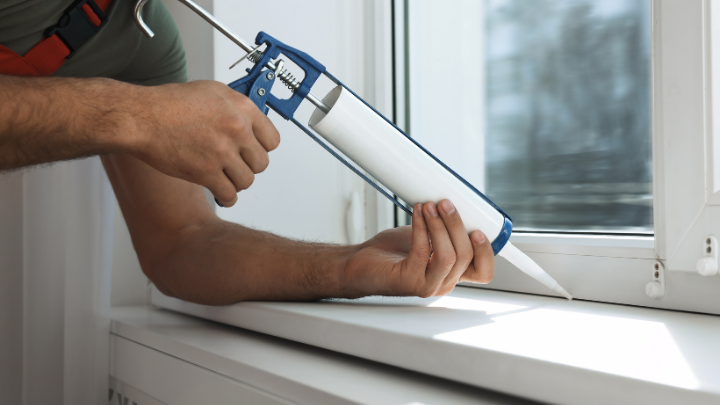
Source: Canva
The main appeal of caulking windows is that it’s a one-time job, one that only needs to be repeated once the original caulking has worn. By doing so, you’re ensuring that your windows are sealed against insects that would otherwise perceive the slight openings as a way of sneaking into your home. Regarding the time needed to carry out such work, Zein Chehadeh, MAG-MTL Projects Inc., explained that “The time needed to insulate a window depends on the size [and sash], but on average, it’s done in 4 hours.” Here are the other advantages of caulking windows:
1. Comfort above all (it’s not toxic)
Whatever the season, the goal behind caulking is to provide maximum comfort. One of the greatest benefits of caulking is that this product isn’t a health hazard. This is especially important if you have pets at home, or if you have young children roaming about. You’ll be amazed by the number of caulking products that aren’t toxic to one’s health. Therefore, you can safely use these to insulate your windows for winter and summer.
2. Lower utility bills
Another reason why homeowners are so partial to caulking is its energy efficiency. However small a gap around a window may be, air can easily seep through, and that can potentially create significant drafts within the house.
Without properly applied caulking, a lot of homeowners unnecessarily crank their heating or air conditioning, which leads to a waste of energy consumption, resulting in a costly energy bill. Caulking around windows is a simple way to reduce your bills and improve your home’s overall energy efficiency.
3. Weatherproofing
On top of preventing air drafts, caulking around windows offers added protection against the elements, which can filter through the window frame or via other gaps. Also, it can lead to dust and dirt freely trickling in without caulking to effectively seal cavities. Moreover, when the humidity caused by rainfall or snow seeps in, not only will it damage the structure, which leads to rotting, but it'll also lead to a build-up of hazardous mould. Properly insulated windows will also provide additional soundproofing and UV-ray protection. However, you'll no longer be faced with these issues once you’ve caulked your windows.
4) Prolongs the durability of your windows
Nowadays, most windows are manufactured to last up to 60 years. However, they won’t last as long if proper maintenance and upkeep are neglected. When windows are properly caulked, it guarantees their durability for a number of years to come.
How to Caulk Windows
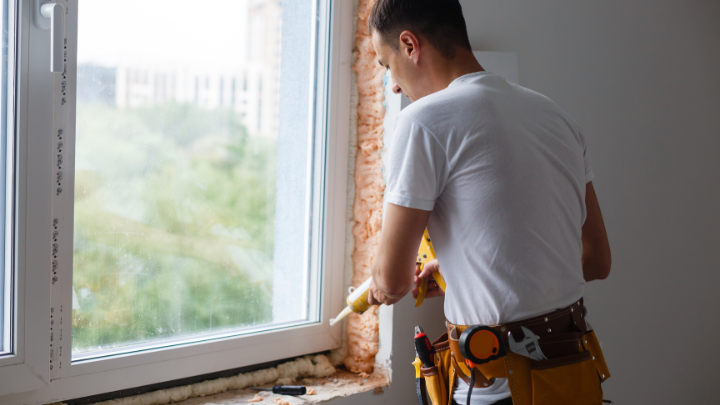
Source: Canva
Here are step-by-step instructions to caulk the windows of your home:
Remove the window frame and any moulding found around the window to have better access to the space between the frame and the wall.
Remove the insulation found in the cavity between the wall and frame.
Prepare the windows by applying a strip of adhesive tape around both sides of the frame's edge where you plan on caulking.
Cut the caulk tube at a 45-degree angle along the line marking the size of the cavity you wish to fill.
Prepare the caulk gun: place the caulking tube into the caulk gun, and test-caulk the gun on a discarded piece of cardboard.
Start caulking as you see fit by positioning the tip of the tube on the window’s corner.
Smooth out the sealant applied: dip your finger in water and run it along the recently applied caulk to smooth it out. You can also use the back of a plastic spoon or a foam paintbrush to smooth out the sealant.
Remove the adhesive painter’s tape when the caulk is still wet.
Allow the caulking to dry for at least 24 hours (avoid touching it until it’s completely cured).
Once the foam has cured, remove any excess sealant with a utility knife.
What are the best ways of insulating windows?
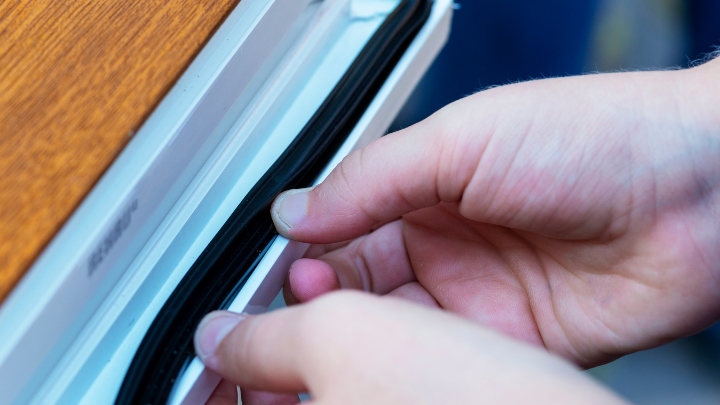
Source: Canva
If you want to know how to insulate your windows against cold (and heat), here are the best window insulation methods available to you.
1. Window insulation courtesy of caulking
One of the easiest and most effective ways to insulate a window is to seal the edges of the glass with caulk. This type of product adheres to most surfaces and creates a tight seal against the elements (water, air, cold, etc.), thus filling in the small gaps around the glass.
Caulking is available in a variety of formulas, but for window use, acrylic latex or vinyl latex are equally beneficial choices. An acrylic latex window sealant used for insulation can last up to 15 years, although it doesn't hold up nearly as well in damp/humid environments. On the other hand, vinyl latex is resistant to moisture, but usually only lasts five years.
2. Double- or triple-glazed windows
Should you want long-lasting window insulation, consider double-glazed window panes. These are thin-framed window panes. The double glazing will enhance your window's thermal performance, yet it won't compromise the overall appearance of the structure.
Also, using double- and triple-glazed window panes, with narrow gaps between each layer and thermally efficient frames, will trap more air and provide better insulation. However, the downside of this option is its cost.
3. Window weatherstripping
This is a low-cost option to tackle your windows' thermal insulation problem. You can pick from different types of window insulation, but a foam strip is the most commonly applied, easy-to-use, and inexpensive option.
Simply measure the width and height of your window and cut the window weatherstripping accordingly. Position it along the edge of the window, and it'll keep air out for several months.
4. Plastic film window insulation
This product is a clear film that can be applied over your windows (on the inside). Like many insulation products, the film acts as a barrier between the interior of your home and your windows, preventing heat loss and cold air from outside from filtering in.
And, unlike other products, window film is a low-cost solution in the long run. It's also maintenance-free and doesn't affect the amount of sunlight flowing in or the overall appearance of your windows.
5. Thermal curtains
Thermal curtains have a unique lining that provides effective window insulation when kept entirely covered. The best part about using these curtains is the fact that they obstruct any airflow. They'll actually retain warm air in your home during the colder months of the year and retain the coolness of your home during the summer.
Furthermore, they'll act as a window sound barrier (reducing outside noise) and give the room added appeal due to the different colours and patterns.
How to Choose a Well-Insulated Window
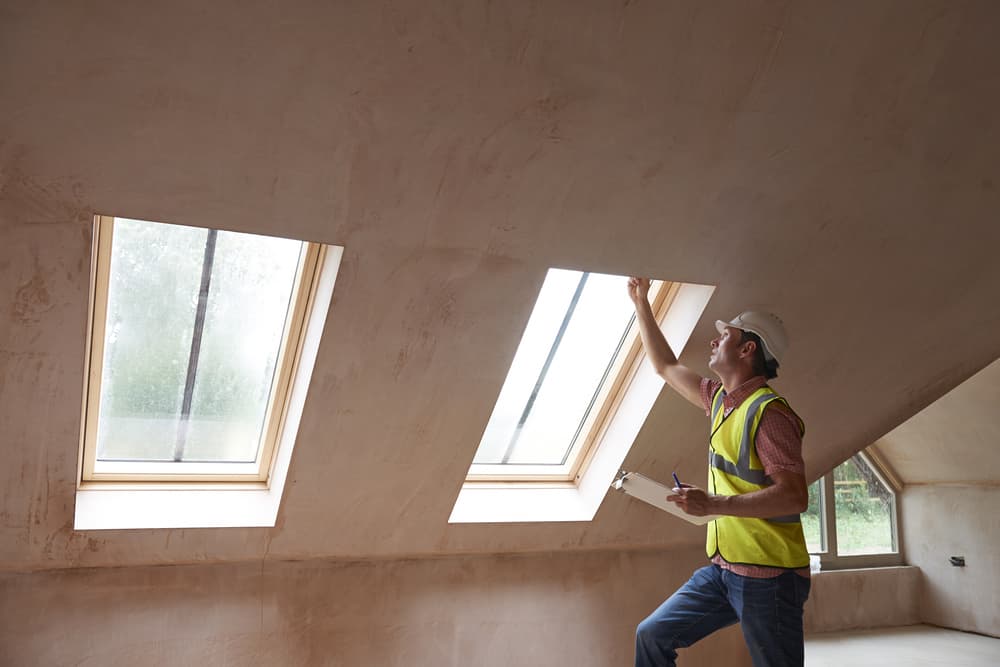
Source: Canva
Choosing energy-efficient windows is paramount, since they’ll significantly reduce your energy consumption and improve the indoor air quality of your home. If you choose highly insulating windows, here are the parameters to look for:
R-value: It measures the thermal insulation value of a material. The higher it is, the better the thermal insulation. A window’s maximum R-value is R-5.
U-value: Thermal resistance can be assessed using the U-value, which is the opposite of the R-value. When purchasing new windows, focus on those with the lowest U-value possible.
Energy rating (ER): Consider windows with high insulation, and choose windows with a higher ER.
Note that the most commonly used insulation materials are PVC, PVC foam, and acrylic panels.
Steps-by-Step Window Frame Insulation
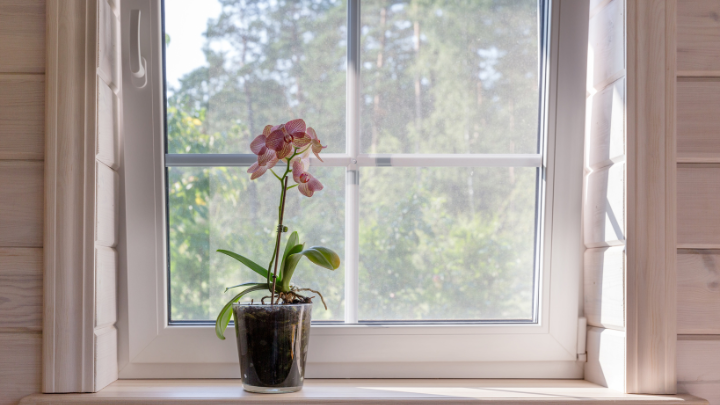
Source: Canva
Windows are made up of three components: frame, glass pane, and sash. “The frame is the single most important part of the window as it prevents air drafts,” explained Chehadeh, MAG-MTL Projects Inc.
So, to insulate a wooden window frame (for an aluminum window too), you’ll need to fill in this space to prevent cold air from filtering in. Failure to do so will result in a build-up of condensation that'll cause the window to freeze, thus increasing your electricity bills and home maintenance costs.
To effectively insulate a window frame, the most common options available include the following:
Wool Insulation
This method is ideal if the gap between the frame and the window is fairly large. However, foam insulation is more effective. If you choose mineral wool, it shouldn't be compressed during the installation process. The insulating properties of mineral wool can be impaired if squashed.
Foam Insulation
This is a liquid that expands when in contact with air to create the desired insulation by filling the gaps between the shims, framework, and window frame. When using this method, it's essential to immobilize the frame (with wood shims), as the foam can shift the frame (alter its alignment) upon expansion (volumetric expansion). To prevent the frame from budging during the expansion phase, place small pieces of wood at select intervals between the window and the frame before injecting the foam insulation.
Keep in mind...
To guarantee effective window insulation, it’s imperative to adopt a thorough approach, one that consists of interior and exterior caulking. By blending these two methods, you’re essentially building an effective barrier against air drafts and heat loss.
Lastly, the cost of insulating a window will depend on its size. “For example, MAG acrylic sashes are $37/sq.ft [includes measuring and installation], detailed our contractor on record. Here’s a rundown of the primary advantages of carrying out such work:
Reduce energy consumption
Save 30% of related expenses
Achieve an ambient temperature
Prevent dust from filtering in
No condensation
Mitigate sound pollution
Enhance well-being
For more information regarding your potential window caulking budget, check out our article Caulking Price Guide.
Get 3 renovation quotes for your window insulation project
Renoquotes.com can help you get quotes for your window insulation project. By submitting your project, we’ll put you in contact with top-rated contractors. Fill in the form on the homepage (it only takes a few minutes), and you will get estimates from trusted professionals.
Dial 1-844 828-1588 to speak with one of our customer service representatives.
Last modified 2024-02-26
Looking for something else?
Related articles
The latest industry news, interviews, technologies, and resources.

SoumissionRenovation.ca • 07 Nov 2023
Need to change your old windows? There's no shortage of options on the market! To give you an overview of the possibilities available to you, here are some of the most beautiful models to give you some inspiration.
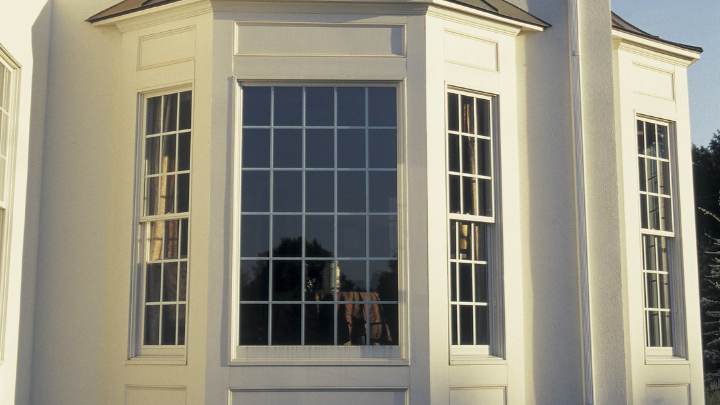
N/A • 21 Mar 2024
Windows rank amongst the fundamental architectural features of a house, allowing daylight to filter in. With that in mind, bay or bow windows are a sure asset in all homes.
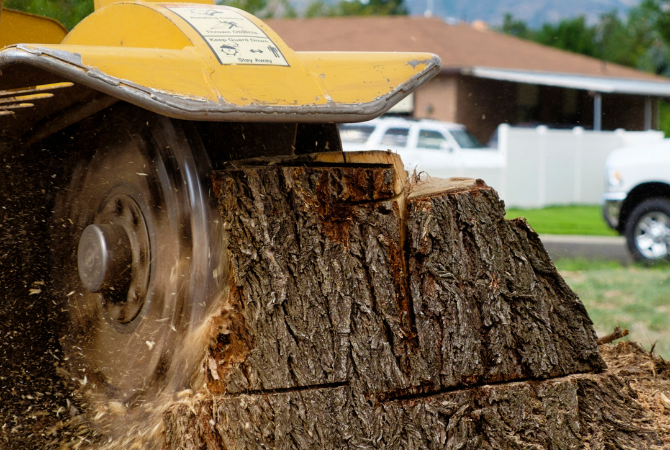
RenoQuotes.com • 26 Mar 2024
Are you looking to increase the space available in your yard, or simply for health and safety reasons, need to remove a tree? Note that once said tree is cut down, its stump will remain rooted, and you should really consider having it removed.

Karine Dutemple • 07 Nov 2023
Like many of us, you've probably spent a lot of time relaxing in your living room. Comfortably seated on your couch, you may be unhappy with what you are seeing when you look around the room. You are then hit with the sudden need to find new ideas to redecorate this much-loved relaxation spot.
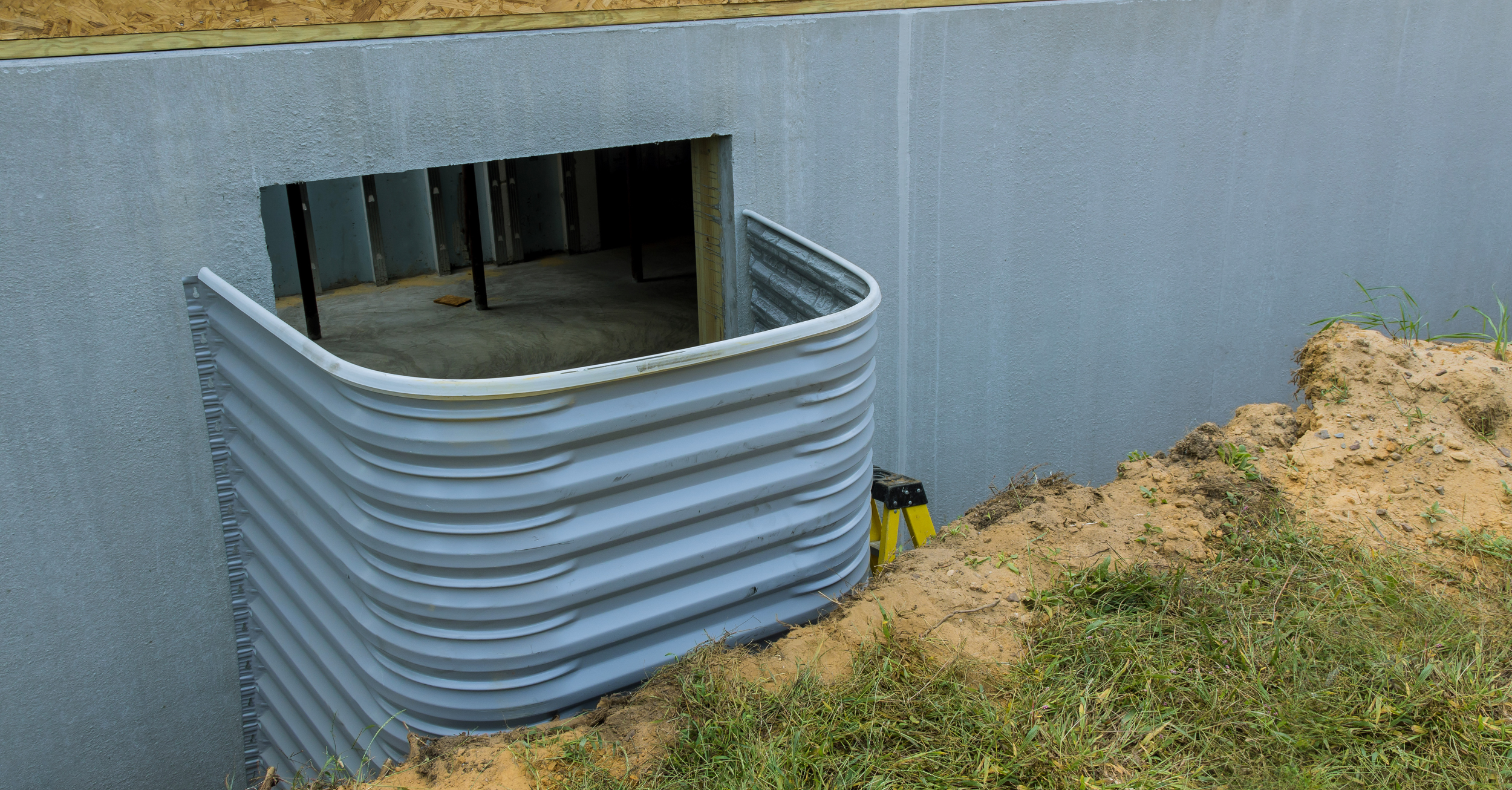
RenoQuotes.com • 19 Dec 2023
It all comes down to this: Water is a house’s number one enemy, so when a basement window sill is even to or slightly higher than the grass, said proximity to the ground risks exposing it, along with its components, to soil moisture.